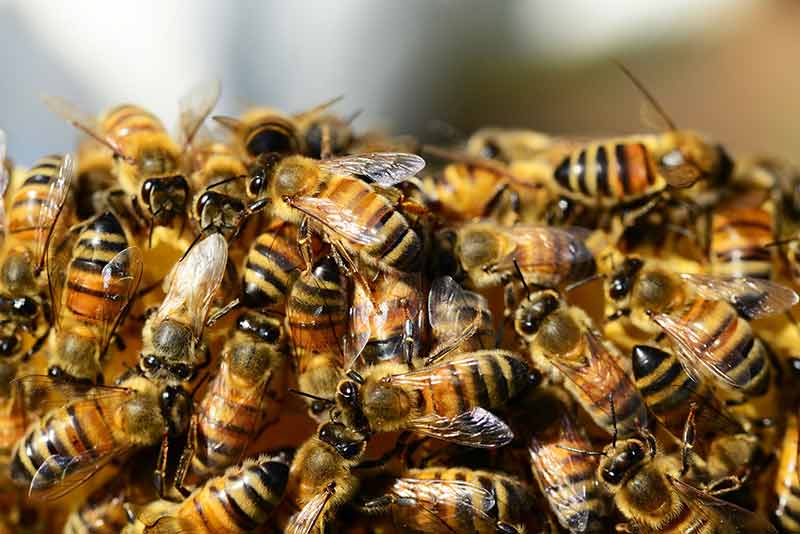By Dylan Stuntz, American Forests
Bees are often appreciated from afar for their pollination and honey, but if they get up close, those compliments often dissolve into shrieks of terror. Yes, bees sting, but they also are capable of so much more than that.

These little striped insects have incredibly intricate social structures and forms of communication, and the behavior of bees holds some mysteries that researchers are still trying to solve.
Individual bees may be small, but they contribute an outsize role to the ecosystems they inhabit. Honeybees pollinate 85 percent of all flowering plants and 35 percent of all edible crops, while contributing more than $15 billion to the U.S. economy. For many fruits, vegetables and nuts, bees serve an integral function in their reproductive cycle. How do these insects manage to stay so busy? It’s largely thanks to highly organized social structure of the hive and the communication between the bees inside.
Bees live in complex societies, with strict hierarchies between drones, workers and queens. Fun fact: Queens and workers are genetically identical. What makes the queen so imperial is that while she’s in her larval stage, she feeds solely on a substance called royal jelly, instead of the usual diet of pollen and honey. Worker bees will feed all larvae royal jelly for the first three days, then switch to a diet of pollen and honey for larvae destined to be workers, while larvae designated as queens will continue to exclusively eat royal jelly. Previously, researchers had hypothesized that the royal jelly activated certain genes, resulting in the larvae becoming a queen, but new research has found that it may be the lack of pollen and honey in the diet of the queen-to-be that activates the necessary genes.
Inside the hive, bees are able to communicate the location of patches of flowers to others through what researchers have dubbed a “waggle dance.” The bee moves in a unique figure-eight pattern, with a “waggle” in the center. The vertical angle that the bee starts the dance denotes the angle of the flower in relation to the sun, the distance of the waggle is related to the distance of the flower from the hive, and the speed of the waggling demonstrates the excitement of the bee. Bees actually measure distance through amount of energy expended, so flying against a strong headwind could cause a bee to lengthen the amount of time spent in the waggle. This is the most complex form of communication ever discovered in invertebrates.

Not only are bees capable of orienting themselves directionally based on the location of the sun, on days where the sun is obscured, they can also use the polarization pattern of a blue sky, or Earth’s magnetic field. Bees also have an internal clock capable of tracking the changes of the sun, so if a bee visits a location in the morning, it is able to revisit it in the afternoon even after the sun has changed positions. All of this will affect the waggle dance of a bee — researchers have identified that even after spending hours inside a dark hive, a bee will still be able to properly convey the location of the sun through its waggle dance.
Social structures within hives and the forms of communication between bees allow them to occupy a vital niche in in the life cycles of many flora, giving plants the opportunity to cross-pollinate genetic material that otherwise would not be spread.
So the next time you see a honeybee bumbling along, don’t shriek. Stop and appreciate everything that little insect does.